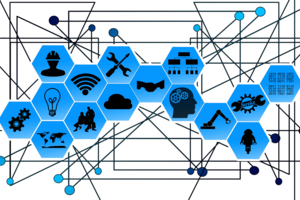4 challenges in IoT hardware designing

IoT development is complex and bound to uncertain challenges throughout the development lifecycle. Further breaking down the development into different components, issues in hardware design are the most critical because they can’t be rolled back.
And that’s why overcoming design challenges in an IoT landscape should be talked about more often. In the following article, we walk you through 4 major challenges in IoT hardware designing, says Yash Mehta, an IoT and big data science specialist.
Finding hardware designers
In the US, there are more than 50,000 qualified hardware design engineers. If there’s no shortage of the skills then why do so many organisations struggle with finding the right talent?
Most organisations are unable to build a proficient team because they didn’t use the right channels. Unlike software professionals that are almost available everywhere, hardware designing requires finesse. For IoT, the degree of expertise is higher and organisations must work on their team carefully.
Apart from social networking, public marketplaces are a valuable option to connect with professionals. Marketplaces such as Upwork, Ioterra and Clutch are dedicated to IoT professionals and provide a comprehensive listing of resources across disciplines including hardware designing.
These platforms host qualified professionals who can directly connect with companies looking for similar project requirements. These hardware development marketplaces provide multiple levels of search help filters that narrow down your search quickly. Furthermore, businesses can filter hardware designers for specific product requirements.
If you are new in this line of business, we recommend building a hybrid team first. The hybrid team is a mixture of full-time in-house resources and certain roles outsourced to product development companies for faster development.
Likewise, there are events and conferences wherein you can connect with fellow companies. Don’t compromise with finding the right designers. After all, the fate of challenges that follow depends upon who is working on them.
PCB design challenges
A Print Circuit Board (PCB) is the brain of an IoT network. It consists of numerous sensors, wired and wireless components installed close to each other. Let’s visualise a typical PCB design. A regular circuit positioned in one corner generates power to the entire board. There are multiple beam microphones to implement an audio response system. There are motor control circuits, sensors and a mesh of random circuitry as per diverse application requirements.
This was just a high-level view of a typical, small-sized PCB. It could expand into a bigger work area for greater application requirements.
Here, the design can go wrong because it is vulnerable to cause interference from traces. Furthermore, it can cause a lot of noise when interfering with analogue components.
Even a small fault could end up disrupting the device functionality while leaving you in confusion as to what and where exactly in the network the process went wrong. From doors to industrial equipment, PCBs play a crucial role and that’s why organisations shouldn’t ignore expert help.
Optimal use of prototypes

Yash Mehta
Prototyping is an essential phase in the IoT hardware development lifecycle. It lets you evaluate the compliance of the system functionality wrt different scenarios and conditions. Since it is difficult to roll-back developments in the IoT landscape, it is important to test the prototypes in detail. Most developers don’t use the prototypes to the extent they should and end up missing important details that convert into an issue in the main product. While you can’t keep on changing the devices and their design, it is important to devote more time before approving a prototype.
Therefore, before going on production floors, you should include prototyping in the iterative model such as Agile. Get end-users to work on it, analyse their feedback, make changes and eliminate inconsistencies as far as you can. The more you reject at this stage, the less you suffer in production.
Design for uncertain power requirement
An IoT system is made up of several individual hardware components wherein every component could have multiple transistors. The collective power dissipation of all the transistors adds up to a significant amount that is bound to increase with time. If we imagine multiple small IoT networks for a single household, imagine the increase in collective power dissipation of all the devices. At the top of it, there’s uninterrupted data exchange and other analytical operations that would further increase the numbers. Not to miss, power requirements to keep radio connectivity infrastructure including Wi-Fi, Bluetooth, Cellular etc. come with significant requirements.
Hardware designers have to consider this uncertain increase in power dissipation. They should create solutions to efficiently bring down the power requirement without affecting the utility of the network. After all, the IoT is meant to abbreviate routine costs and not the other way round.
One size doesn’t fit all
The Internet of Things will cater to users regardless of their technology, cultural background. Just like the internet doesn’t confine to a particular ‘type’ of users, IoT will have a similar impact. From automated thermostats to turbines, IoT is driving us to a world fully governed by code and devices. Therefore, it is imperative that we add a predictive understanding of potent challenges and faults into our plans.
The author is Yash Mehta, an IoT and big data science specialist.
Comment on this article below or via Twitter @IoTGN
